Window plants are an excellent way to add color and life to your home. They also provide a lot of benefits for your health and the environment.
A home filled with beautiful, lush houseplants on the windows will be the envy of the neighborhood and houseplants can add some zest to your indoor decor.
There are many different types of window plants that you can choose from below. Let’s first discuss windows and which direction they’re facing for the amount of sunlight they receive throughout the day.
Best Window Positions and Direction They Face
The positioning of your windows will decide the amount of light your home receives and the kind of plant that can thrive in a specific window.
In the Northern Hemisphere, like the United States, windows that face north, south, east, or west will get different levels of light. This is an overview of the types of plants that are good depending on the direction of the window.
North-Facing Window – This direction will receive weak sunlight. Plants that grow native in rainforests or under canopies formed by trees will be comfortable in north-facing windows as they are used to receiving only dappled light.
South-Facing Window – Plants that need really bright, direct sunlight should be placed on a south-facing windowsill.
East-Facing Window – This direction receives weak sunlight in the morning hours. Plants that require bright, indirect light will do well in an east-facing window.
West-Facing Window – These windows receive afternoon and early evening sun. Another option for sun-loving plants. There is strong light exposure, but less than south-facing windows. It’s still a good window direction for plants that need direct sun exposure.
Are you ready to dress up those windows with indoor plants? Here is my list of the Best Window Plants.
1. Aloe Vera Plant
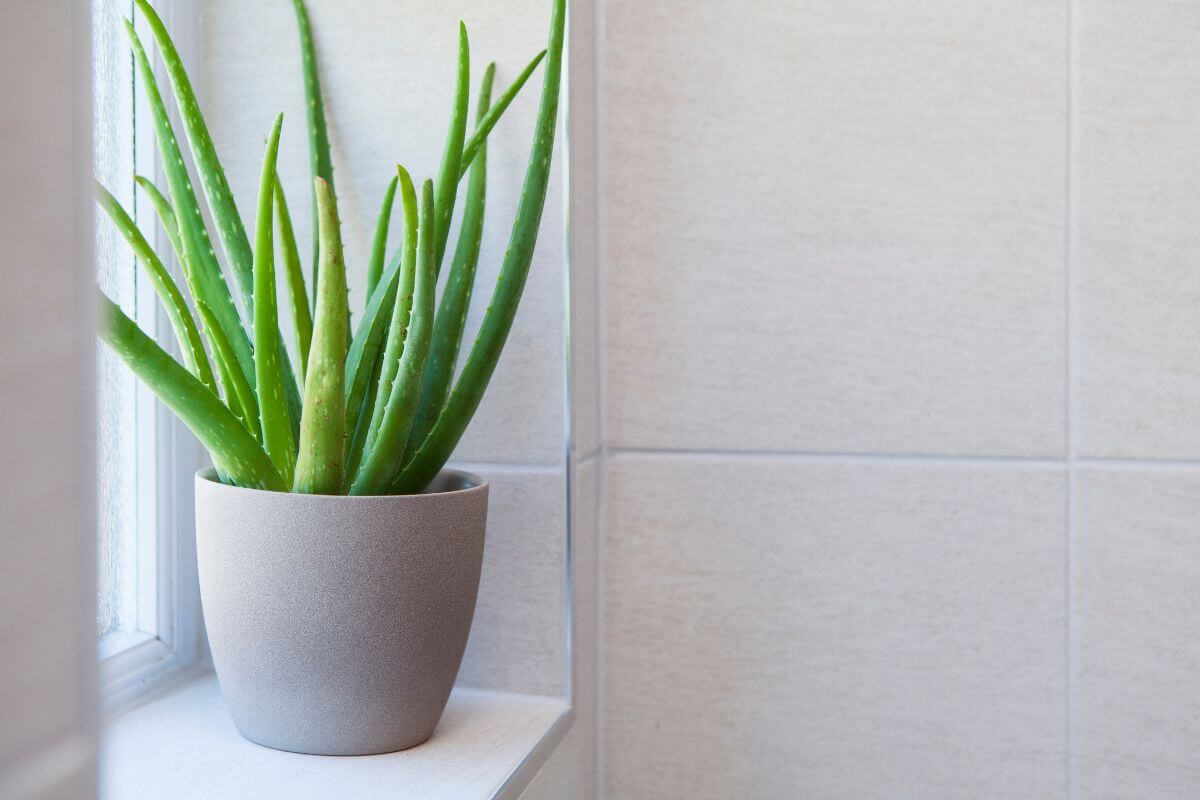
The Aloe Vera Plant is a member of the succulent category of plants. It boasts beautiful leaves that are often described as fleshy due to their ”plumpness.”
These plant’s leaves are full of a watery gel and this plant is quite well-known because of this substance. This liquid is applied to the skin to treat burns, insect bites, and various irritations. It is used both in skin products or applied directly to the skin by breaking open the leaf.
The plant’s base forms a rosette and the leaves grow upwards from this crown. Leaf edges are jagged with small spike-like protuberances while the leaf spines are flexible.
Botanically named the Aloe barbadensis miller, this succulent enjoys bright indirect light. Exposure to direct sun can burn the plant. When these plants do not get sufficient light, they will get leggy and lean towards a light source.
A well-draining growing medium is a must for all succulents and the aloe vera is no exception. A potting mix specifically for cacti is ideal.
Try a southern or western-facing sunny window to ensure that your aloe vera thrives. Should you live in a climate where sun exposure is harsh, you may notice that the plant’s Ieaves fade or grow brown spots. That’s due to strong, direct sun exposure. Move the plant to a windowsill with milder exposure.
Learn more about growing the aloe vera plant.
2. Bird of Paradise
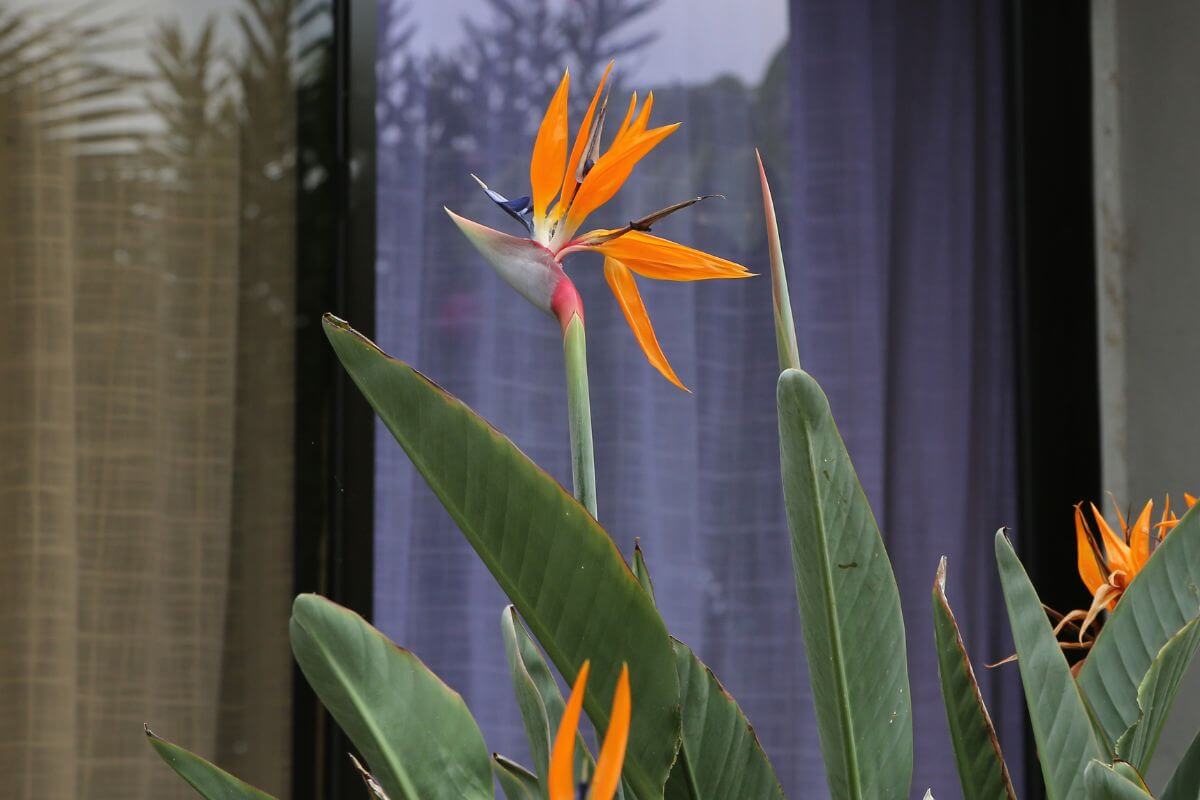
Do you enjoy bright colors? Get the Bird of Paradise plant on your windowsill. It will grab the attention of whoever passes by as it’s one of the most colorful indoor houseplants.
This tropical plant is a member of the Strelitzia genus and is botanically named Strelitzia reginae. It is a native of South Africa and related to bananas.
The bird of paradise can grow to be quite tall and will produce beautifully colored blooms. The plant’s flowers are shaped in the form of a bird’s beak, so they will bring an original colorful design to your window.
Where you reside will influence the correctly positioned window for hosting this plant. In warmer, sunnier climates or seasons, the Bird of Paradise will thrive in indirect light. In a colder climate, or during a cold season, it will handle direct sunlight nicely.
Begin by placing it on a south-facing windowsill, but if you are worried about sun exposure in the summer, move it to a west-facing sill.
3. Cacti
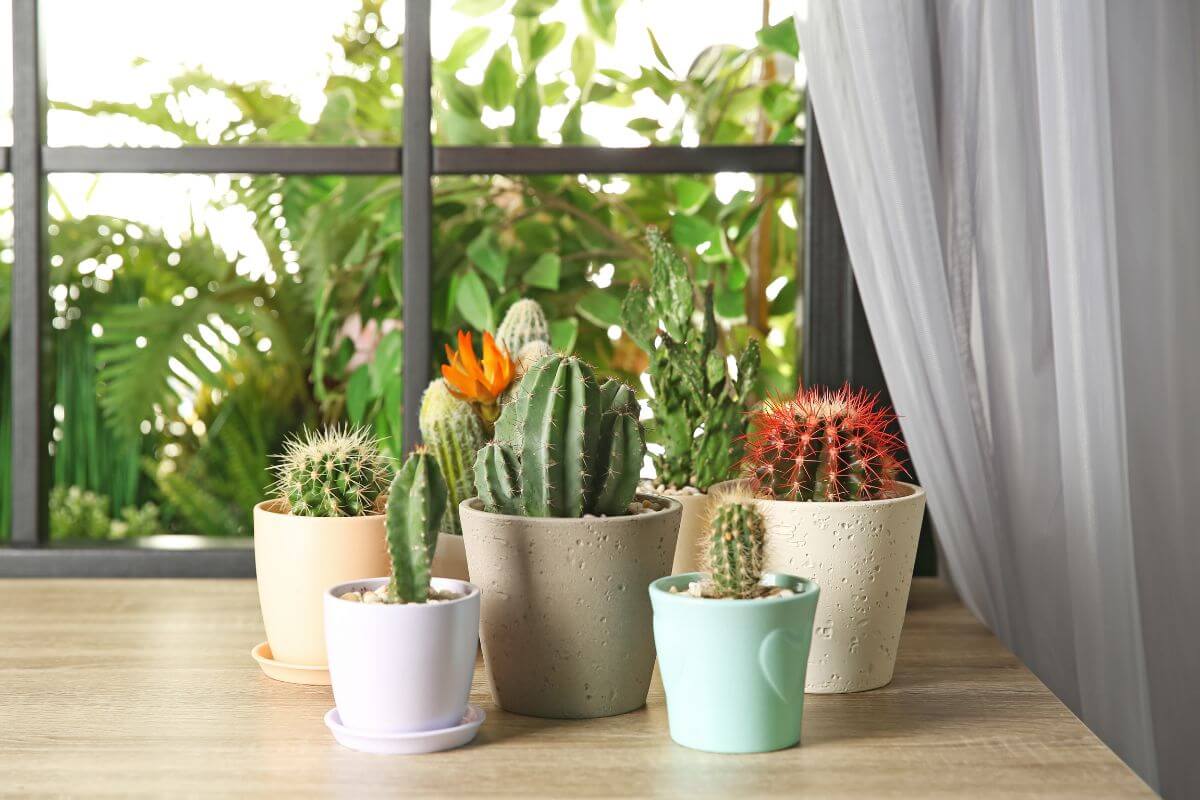
Which plants are the best and most low-maintenance around? Cacti are hands-down the winners in this contest. They’re mostly compact plants thatare great sizes for windows, desks, and tables.
They also thrive in direct sunlight making them among the best window plants overall. There’s less concern for direct sunlight scorching their fleshy leaves.
Like the aloe vera, they should be planted in a cactus potting mix precisely because this type of growing medium is exceptionally well-draining.
Do you have south-facing windows you want to dress up? These are the plants to choose. Their native habitat is the desert, so direct sun exposure is welcome.
Do keep in mind the type of cactus plant you choose, as you may actually find a few that naturally grow in rainforests. However, sun-loving cactus plants include:
- Agave
- Barrel Cactus
- Blue Chalk Sticks
- Cereus
- Hedgehog Cactus
- Hens and Chicks
- Pencil Tree
- Prickly Pear
- Stonecrops
- Tree Houseleek
So, any of these cacti will nicely decorate a windowsill with direct sun exposure.
4. Croton Plant
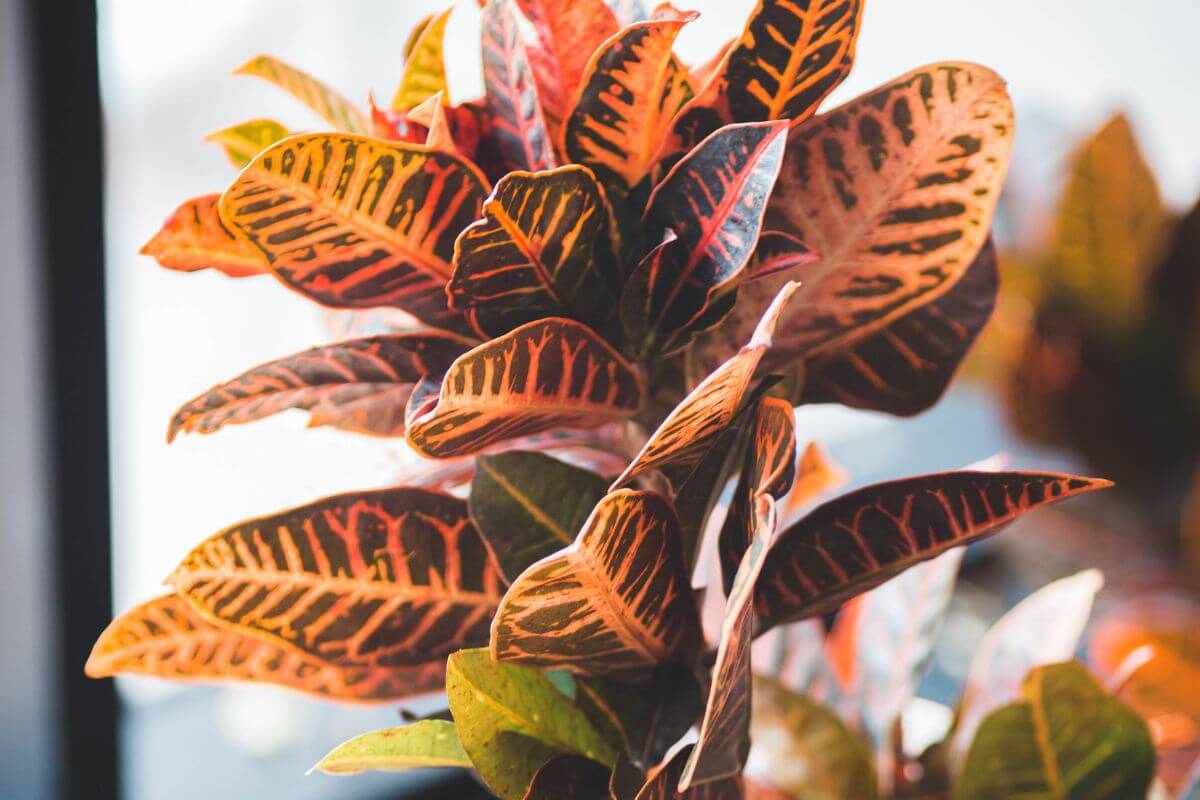
The Croton Plant with a botanical name Codiaeum variegatum, is a member of the Euphorbiaceae family. It’s a vividly colorful plant that will really dress up a windowsill.
Croton foliage comes in multiple colors. You can find croton leaves in red, yellow, and intense green. However, the Croton can be a bit of a diva when it comes to houseplants.
They prefer warm and humid conditions with dappled light and generous waterings. The croton is native to Malaysia and India. In warmer climates, they are cultivated outdoors as ornamental shrubs.
The ideal growing medium for the croton is a well-draining potting soil that has a nice dose of peat moss mixed in to help maintain moisture.
Growing colorful leaves depends on the amount of light the plant receives. Lots of sunlight that’s indirect will help your croton to thrive.
Try a west-facing window for good light exposure, but without the harsh unfiltered light a south-facing window may afford.
Learn more about how to care for croton plants.
5. Jade Plant
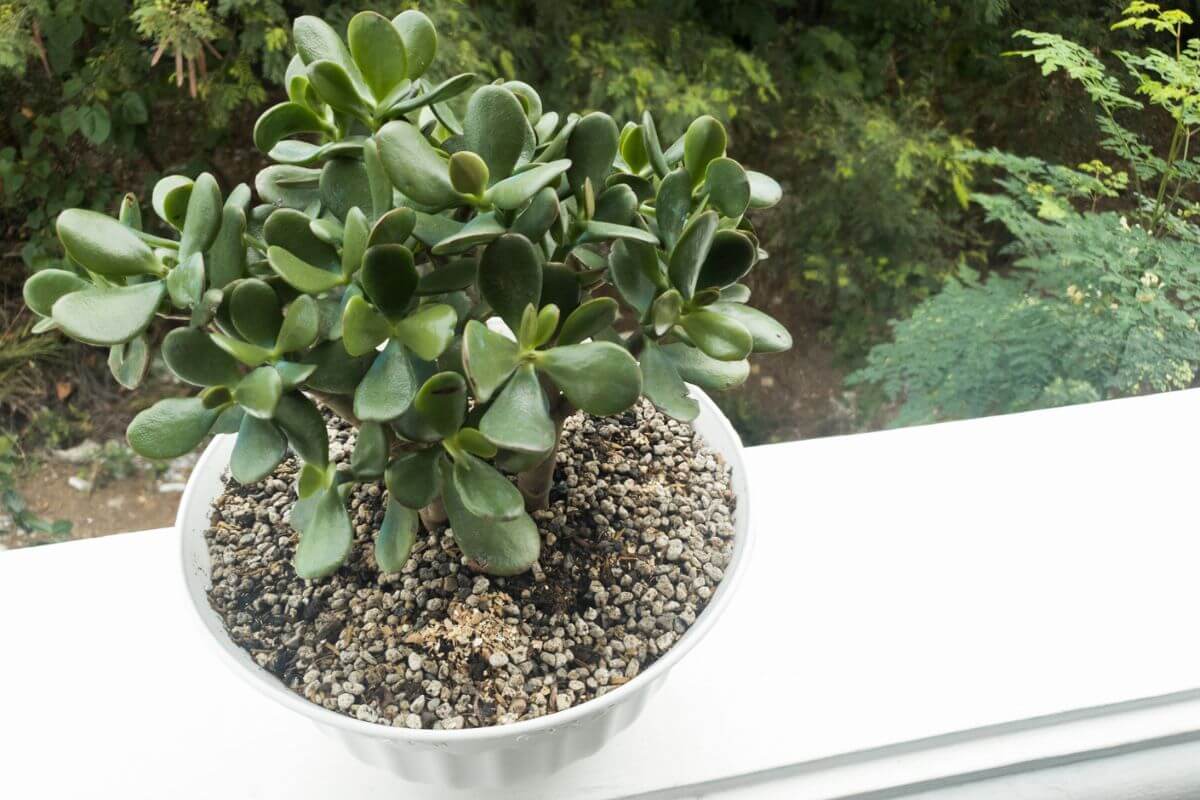
The Crassula ovata or Crassula argentea, is commonly known as the Jade Plant, the Money Tree, or the Lucky Plant. A South African succulent that belongs to the Crassula genus, there are about 150 species of Crassulas in existence.
The jade plant is one of the most popular houseplants because it’s one of the more adaptable succulents and will survive in a variety of conditions. It’s also thought to bring good luck to the plant’s owners.
The jade plant is characterized by full pillow-like leaves that will bring a beautiful sculptural quality to your windowsill.
Sandy, well-draining soil is the ideal growing medium. A lover of sunlight, it needs about six hours of bright sunlight daily. Do be careful about scorching the leaves of many succulents when you expose them to direct sunlight.
With a young jade plant, you may see scorching directly on the foliage. Older plants may develop a red tinge to the leaves as a result of too much direct sunlight. West-facing window locations may prevent this risk all together.
The jade plant is easy to care for both indoors and outdoors. For its beauty and love of light, it has earned its place on the list of the best plants to place on windowsills.
Read how to care for jade plants for healthy growth.
6. Kalanchoe Plant
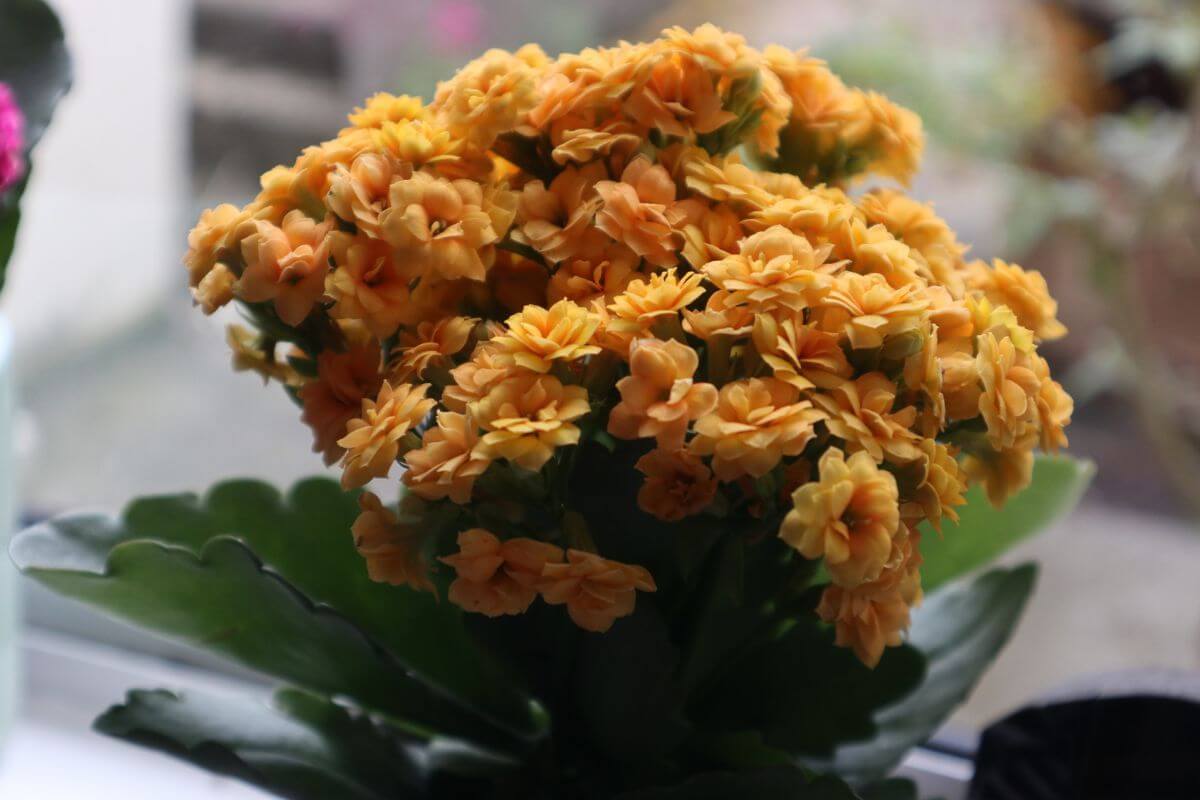
A Madagascar native, the Kalanchoe Plant is a really popular succulent that you might have seen being sold in your local supermarket. A slow grower and member of the Crassulaceae family, it’s botanical name is the Kalanchoe blossfeldiana.
It will thrive in the most arid of climates and requires very little care. Its ideal growing medium should be cactus mix. The golden rule is that it must be well-draining. It’s a small houseplant, so it’s a perfect fit for windows.
What sets the kalanchoe apart are its flowers that will bloom throughout the year. Imagine having a blooming plant all year round on your windowsill! Just give it adequate daylight.
Abundant light is important, so a sunny windowsill is fine unless you live in a very hot climate. In this case, try a west-facing windowsill.
Learn about growing and caring for kalanchoe plants.
7. Ponytail Palm
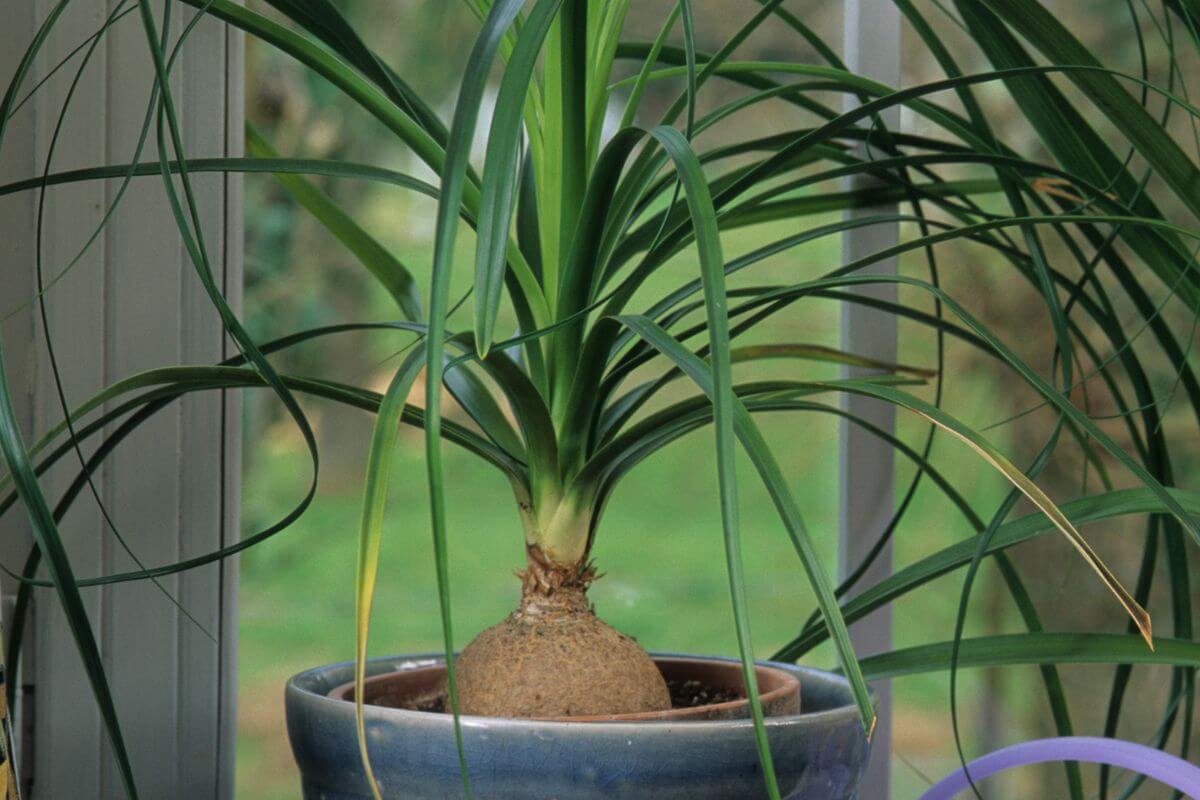
An original and somewhat funny plant, the Beaucarnea recurvata, is commonly known as the Ponytail Palm. A member of the Asparagaceae family, the Ponytail Palm is not a palm tree despite its name and is related to asparagus, the Yucca, and the Agave desert plants.
The ponytail palm has a somewhat wild and unkempt appearance, meaning it will certainly liven up a window! If you grow it indoors, it will resemble a small tree. Flowing green foliage shaped like grass blades will crown a bulbous trunk-like stem. When cultivated outdoors, this plant becomes an enormous tree.
The ponytail palm is a low-maintenance plant that is quite forgiving. Ideal for beginners or people with limited time, you can pot one and forget about it. It will survive!
The ponytail does require bright light levels during its growing season, making it an ideal choice for a window, especially one facing south. And this plant is so hardy, it usually outlives its owner.
Read more about how to care for and grow ponytail palms.
8. Prayer Plant
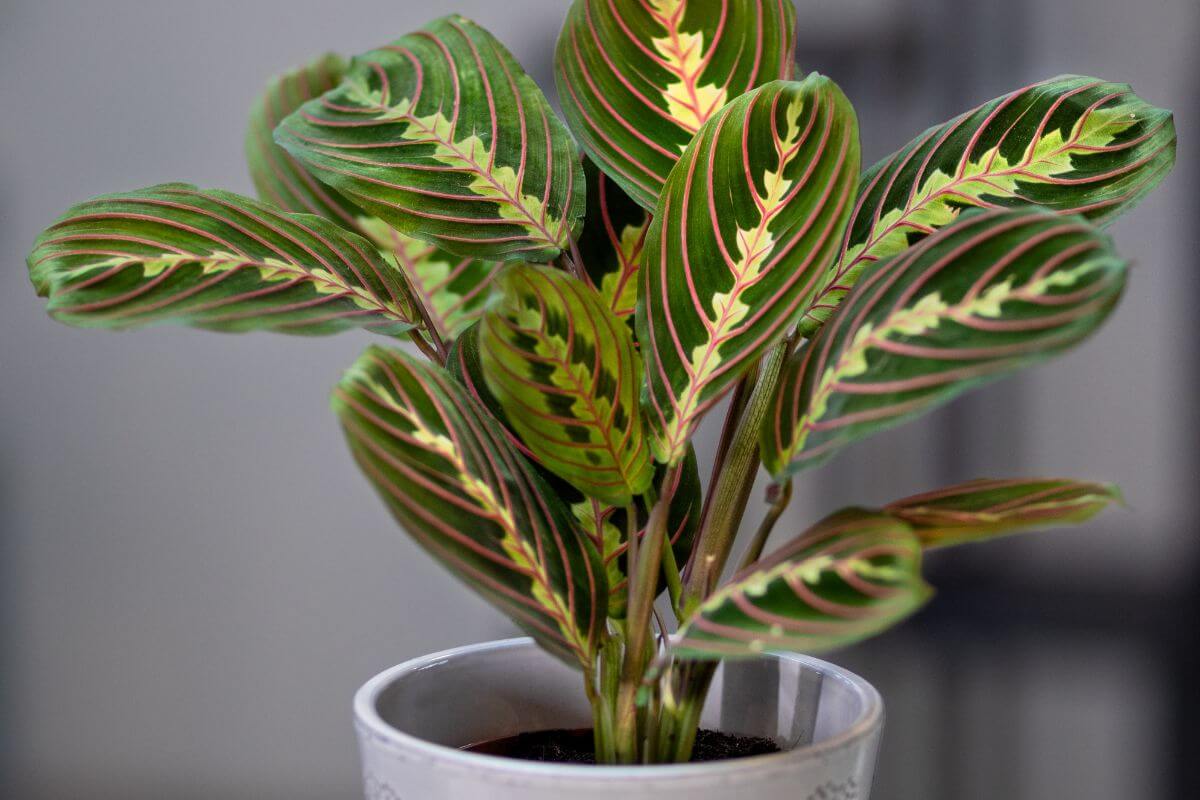
The herbaceous perennial Maranta leuconeura will be recognized by its popular name, the “Prayer Plant.” A native of Brazil, these original plants can be found on the floor of rainforests.
The plant’s popular name “Prayer Plant” is relevant because it describes the movement of the plant’s leaves. The foliage lies flat during the day but will fold upwards during the night. The final closed position resembles hands folded in prayer. This unique movement makes this plant a nyctinasty species.
Since they hail from rainforests, a warm and moist environment is fundamental for a thriving plant. If you place them in a dry location, they will drop their beautiful leaves.
They are lovers of dappled sunlight. Direct sunlight is not ideal but, nonetheless, they are among my best window plants because they do thrivein indirect light.
You can hang or position them near just about any window. If you want to dress a windowsill with a Prayer plant, choose a northern window for best growth.
Learn more about how to care for prayer plants.
9. Snake Plant
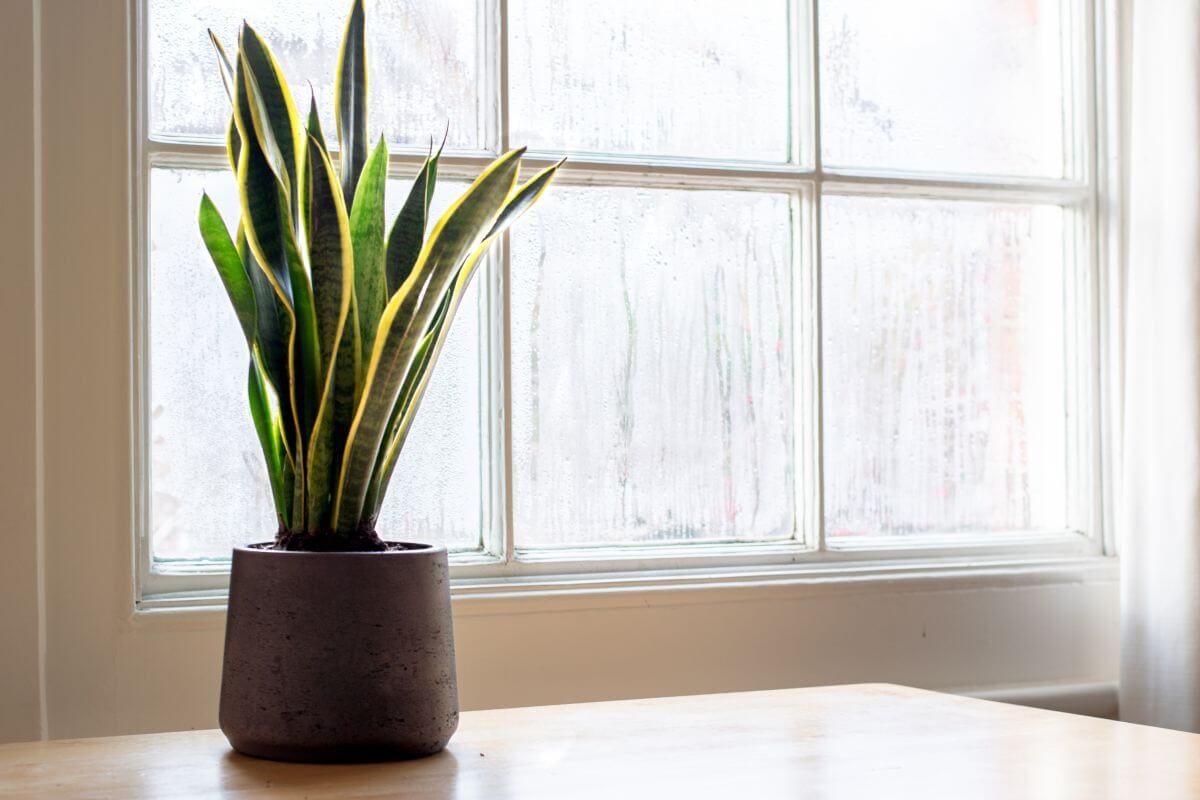
The Sansevieria trifasciata or Mother-in-law’s Tongue is the queen of houseplants. This plant can grow in light conditions from low to full direct sunlight, meaning you can place it on just about any windowsill.
A low-maintenance plant, it will ask next to nothing of its owner. As a native of Africa, snake plants thrive in hot, dry environments.
They grow faster when they receive bright, natural light. Foliage can still suffer from scorching, but this is more likely when you plant one outside. If you have a choice, a west-facing window will make for a happy plant.
Read more on how to care for snake plants.
10. Spider Plant
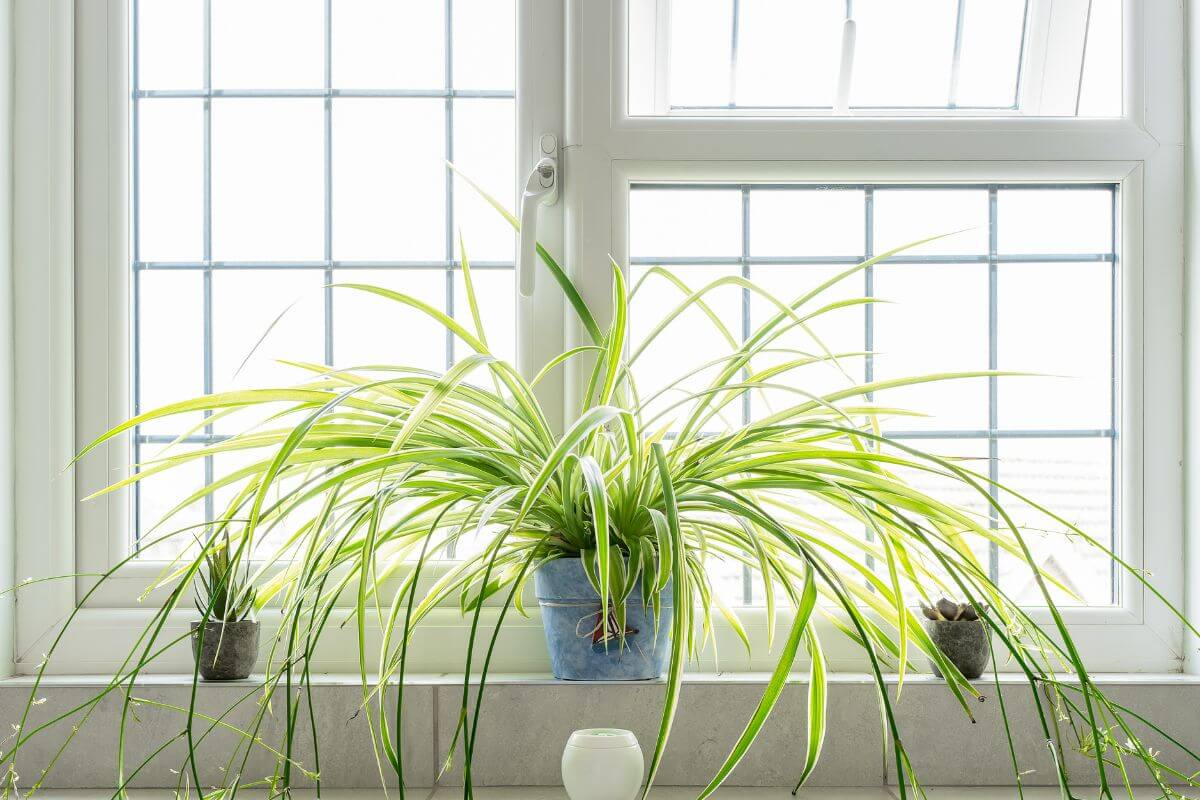
The South African native, Spider Plant is botanically known as Chlorophytum comosum. It is a herbaceous perennial that belongs to the Asparagaceae family. This hardy plant can prosper even in imperfect conditions.
Usually cultivated as hanging plants for its cascading leaves, they are characterized by long stems and hanging baby plantlets.
Direct sunlight can scorch leaves, so a north-facing or east-facing window with indirect sunlight or weaker light exposure is ideal. And thanks to the number of plantlets that grow quickly, you will be able to cultivate many to hang in your windows.
Learn more about growing and caring for spider plants.
11. Wandering Jew Plant or Spiderwort
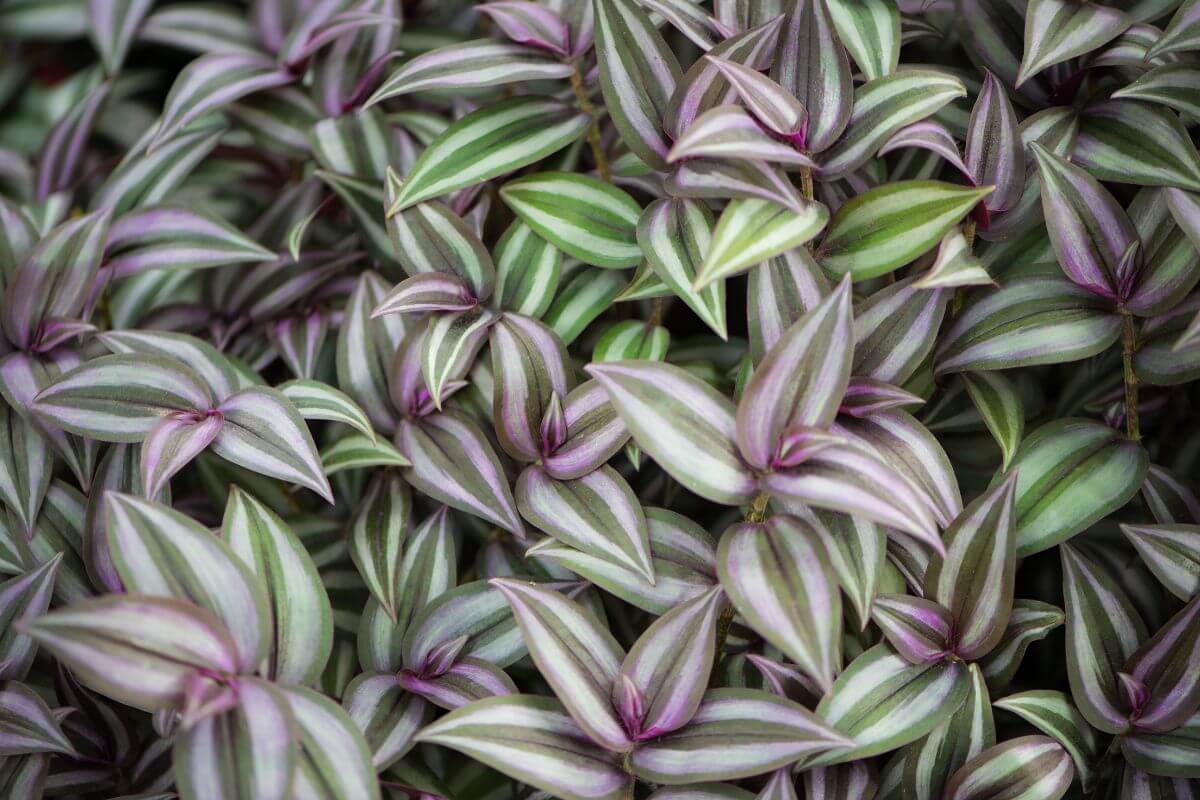
Often called Spiderwort, the Wandering Jew is a hardy plant that is an excellent, colorful addition to any windowsill.
A member of the Commelinaceae family of over 650 species of climbers, herbs, and epiphytes, the Tradescantia boasts numerous varieties, and each one with its own magnetic appeal.
Native to Guatemala and Mexico, the spiderwort is an evergreen perennial that is often cultivated in a hanging pot, allowing the foliage to cascade downward. Pinch them back frequently to keep them full and a bit bushy in appearance.
They will thrive in lots of bright natural light, so they are ideal candidates for windowsills. A need for indirect light makes them good candidates for western windows that face west. Ideally, the window you place them in should give the plant eight hours of sunlight daily.
Read about growing and caring for the Wandering Jew plant.
To curate the above plants and others, let’s collect them by which direction the windows face.
Best House Plants for South Facing Windows
These are the best houseplants to place by your south-facing windows:
- Aloe Vera Plant
- Bird of Paradise
- Cactus Plants
- Ponytail Palm
- Jade Plant
- Areca Palm
Best House Plants for North Facing Windows
These are the best houseplants to place by your north-facing windows:
- Prayer Plant
- Spider Plant
- Golden Pothos Plant
- Snake Plant
- Peace Lily
- Chinese Evergreen
- Cast Iron Plant
Best House Plants for East Facing Windows
These are the best houseplants to place by your east-facing windows:
- Prayer Plant
- Spider Plant
- Areca Palm
- Swiss Cheese Plant
- Schefflera (Umbrella Tree)
- Calathea Plant
- Purple Shamrock (Oxalis)
- Peperomia Plant
- Boston Fern
Best House Plants for West Facing Windows
These are the best houseplants to place by your west-facing windows:
- Aloe Vera Plant
- Croton Plant
- Jade Plant
- Kalanchoe Plant
- Snake Plant
- Wander Jew Plant
Best Window Plants Final Thoughts
There are some great options out there for plants in windows. You may find yourself pleasantly surprised at how well these plants perform indoors.
Regardless of which direction your windows face, there is a good window plant for any of your windows.
Check out these other lists of plants:
- Best Indoor Plants to Grow in Your Home
- Color Houseplants to Brighten Up Your Home
- Best Air Purifying Plants for More Oxygen at Home
Best Window Plants FAQs
What plants are best for a windowsill?
The jade plant and bird of paradise plants are the best plants for windows. Any of the plants included on this list of the best window plants will do well when cultivated in a window or on a windowsill. The window direction will determine how much sun exposure the plant will receive daily.
What window should houseplants be in?
An east-facing window with bright, indirect light provides the best light for most houseplants. Plants that thrive in direct sunlight can sit in a south-facing window, while plants that prefer shade or weaker sunlight exposure will do well in a north-facing window.
What are the best plants for direct sunlight?
Numerous Cacti varieties, many succulents, Jade Plants, and the Ponytail Palm are among the best plants that thrive in direct light.
What are the best plants for north-facing windows?
The best plants for north-facing windows include: Bird Of Paradise, Ficus Benjamina, Peace Lily, Philodendron, Snake Plant, Spider Plant, Succulent, and Vinca Rose. Generally, “understory” plants that grow in tropical rainforests under a natural canopy of trees and receive dappled or filtered sunlight will do well with northern windows.
Why are west-facing windows bad?
No window facing in any direction should be considered “bad.”It’s important to choose the correct plant for each window.The only reason that a west-facing window might be “bad” is that it receives sun in the afternoon and early evening, which can lead to overheating for some plants, specifically in the summer months.
What are the best plants for south-facing windows?
Cacti and succulents that are native to the desert will do the best in south-facing windows that receive a lot of direct sunlight exposure. You can cut down on the amount of sunlight with blinds or lightweight curtains to protect plants during the sunniest period of the daytime.
How do you know which way your window faces?
A compass will tell you which way your window faces. Most smartphones have compass apps that you can use. If you don’t have either, use the sun’s movement. If you’re in the Northern Hemisphere, the sun rises in the east and sets in the west. The sun will be brightest in the south-facing windows at noontime.
Is light through a window direct sunlight?
No, light that enters through your window is not direct sunlight. The glass is somewhat diffused and reflected by the glass. The sunlight is still bright, but less intense than direct exposure to sunlight when outdoors.












